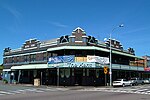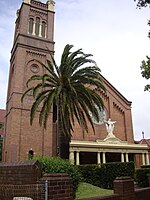Electoral district of Counties of Murray and St Vincent
The Electoral district of Counties of Murray and St Vincent was an electorate of the New South Wales Legislative Council at a time when some of its members were elected and the balance were appointed by the Governor. It was a new electorate created in 1851 by the expansion of the Legislative Council to 54, 18 to be appointed and 36 elected. The district consisted of the rural areas of Murray County, which had previously been part of Counties of Murray, King and Georgiana, and St Vincent County, which had previously been part of Counties of St Vincent and Auckland. The towns of Braidwood and Queanbeyan were not part of the district, being included in Southern Boroughs.In 1856 the unicameral Legislative Council was abolished and replaced with an elected Legislative Assembly and an appointed Legislative Council. The district was represented by the Legislative Assembly electorate of United Counties of Murray and St Vincent.
Excerpt from the Wikipedia article Electoral district of Counties of Murray and St Vincent (License: CC BY-SA 3.0, Authors).Electoral district of Counties of Murray and St Vincent
Morgan Street, Newcastle-Maitland Islington
Geographical coordinates (GPS) Address Nearby Places Show on map
Geographical coordinates (GPS)
| Latitude | Longitude |
|---|---|
| N -32.916666666667 ° | E 151.75 ° |
Address
Hair Space
Morgan Street
2296 Newcastle-Maitland, Islington
New South Wales, Australia
Open on Google Maps







